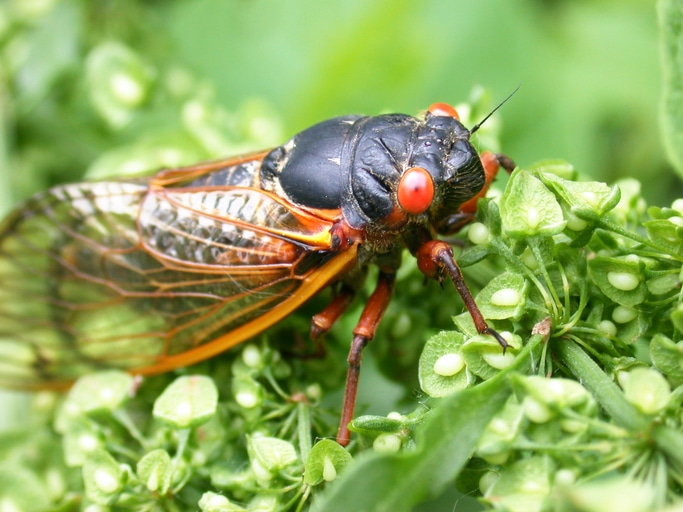Streaming golden light, tickling the top of freshly mowed grass, while dancing mosquitos delight in the glory of the setting summer sun. The birds, resting their voices, the rage of lawnmowers in the distance, yet both a familiar and alien-like sound breaches the hazy trance, the cicada’s song. Part of a childhood memory, but still very much alive, cicadas simply ring in the sound of summer when they grace, or plague the Earth, in such a season.
Brood X
Brood X cicadas have emerged yet again, as they do every 17 years, from their underground world and into parts of Pennsylvania, Tennessee, Virginia, and Indiana. Shedding their exoskeletons and leaving them to decorate your backyard fixtures and shady trees. If you can remember, you likely marveled at these beautifully preserved skeletons when you first laid eyes on them as a kid. Or you ran kicking and screaming from these modelesque bugs.
The last time a brood made an appearance was in 2004, invading the city of Baltimore with their bodies. Pelting pedestrians on busy sidewalks, shooting through empty car windows, and pestering pets, all for the sake of reproduction. Their mating sounds were so great in parts of Maryland that the noise level reached a screeching 90 decibels. The emergence, mating, and egg laying took place over roughly 3 and a half weeks before this timely event came to an end. There was heavy rainfall over the course of brood 2004’s life cycle, which caused many to dislodge from trees and fail to complete their mission.
The 2021 Brood X has been humming along quite nicely since their start in early May. Their name is simply derived by the Roman numeral 10, as it is the 10th brood to be tracked by scientists. It’s been relatively warm and dry throughout the southeast which lends for a shorter mating season. So looking ahead, these spectacle creators should begin to die off in late June or early July. Better get to #cicadaeating.
FDA Warnings
While cicada eating is mostly “safe”, as cicadas are a reliable food source for many countries, this particular brood possesses striking similarities to that of shrimp and lobsters. Both shrimp and cicadas have exoskeletons with a similar chemical makeup that cause the same allergic reaction. So, if you are someone who has a shellfish allergy, please refrain from eating these landlubbers.
If you are blessed without a shellfish allergy, the FDA has given the go-ahead for cicada consumption. Just be sure to keep these insects away from your dog or cat, as they can irritate their GI tract.
When you’re ready to serve up some Brood X cicadas, you can find recipes for spicy popcorn or chocolate covered cicadas that are perfect to jazz up your trail mix. Cicada shells are high in protein and low in carbohydrates, an ideal trail snack. When scavenging for cicada shells, be sure to gather them in a plastic bag and store them in the freezer for at least 30 minutes before preparation.
As curiosities abound with each new brood, you can be sure to taste each member, every 17 years of course.








